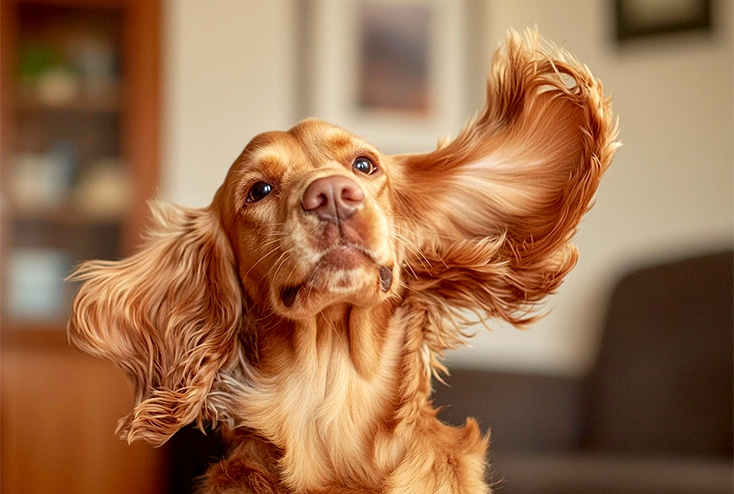Dog Ear Cleaning Tips: Keep Your Pup's Ears Healthy at Home
Only $65 for a consultation
TALK TO A VET
Why Dog Ear Cleaning Matters
Regular ear cleaning is essential for your dog's health and comfort. Dogs, especially those with floppy ears or who swim often, are prone to ear infections caused by bacteria, yeast, and trapped moisture. Routine cleaning helps prevent infections, reduces odor, and keeps your pup happy and pain-free. Clean ears also allow you to spot early signs of problems, such as redness, swelling, or discharge, before they become serious.
How to Clean Your Dog's Ears Safely
Follow these professional, vet-approved steps to clean your dog's ears at home:
- Use a vet-approved ear cleaning solution. Never use hydrogen peroxide, alcohol, or homemade mixtures.
- Gently lift your dog's ear flap and fill the ear canal with the cleaning solution as directed.
- Massage the base of the ear for 20-30 seconds to help loosen debris and wax.
- Let your dog shake their head—this helps bring debris to the outer ear.
- Use a soft cotton ball or gauze to gently wipe away visible debris from the ear canal opening. Never insert cotton swabs deep into the ear.
- Reward your dog with treats and praise to make ear cleaning a positive experience.
Common Dog Ear Cleaning Mistakes to Avoid
- Do not use Q-tips or cotton swabs inside the ear canal—they can push debris deeper or injure the ear.
- Avoid over-cleaning, which can irritate the ear and disrupt its natural defenses.
- Never use human ear cleaning products or home remedies.
- Don’t ignore signs of infection—seek veterinary care if you notice redness, swelling, odor, or discharge.
Recommended Dog Ear Cleaning Products
- Vet-Approved Ear Cleaners: Look for products specifically formulated for dogs, such as Virbac Epi-Otic, Zymox, or Douxo Micellar Solution.
- Soft Cotton Balls or Gauze: For gentle cleaning of the ear opening.
- Treats: To reward your dog and make the process positive.
Always consult your veterinarian before starting a new ear cleaning routine or if you’re unsure which product is best for your dog.
When to See a Vet
If you notice redness, swelling, foul odor, discharge, excessive scratching, head shaking, or your dog seems to be in pain, schedule a vet visit. These could be signs of an ear infection, ear mites, allergies, or other underlying issues that need professional care. Early treatment can prevent complications and keep your dog comfortable.
Dog Ear Cleaning FAQ
How often should I clean my dog's ears?
Most dogs benefit from ear cleaning every 2-4 weeks, but some may need it more or less often depending on breed, activity, and ear health. Ask your vet for personalized advice.
Is ear cleaning painful for dogs?
Ear cleaning should not be painful. If your dog shows signs of pain, stop and consult your vet—it may indicate an infection or injury.
Can I prevent ear infections by cleaning my dog's ears?
Regular cleaning helps prevent infections, but genetics, allergies, and moisture also play a role. Keep ears dry and monitor for early signs of trouble.
What if my dog hates ear cleaning?
Go slow, use treats, and make it a positive experience. If your dog is fearful or aggressive, ask your vet for tips or a demonstration.
Need Help?
Not sure if your dog's ears are healthy or how to clean them? Book a video consultation with a Telavets veterinarian for expert advice and peace of mind—all from the comfort of your home.
TALK TO A VET